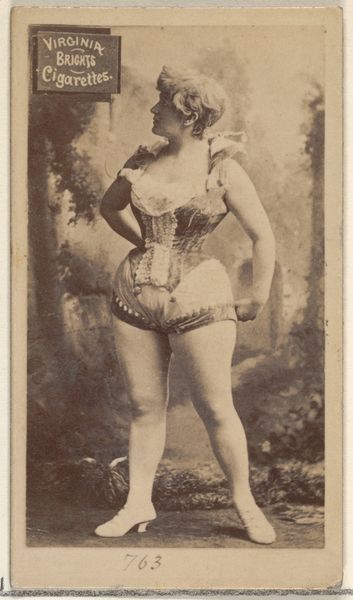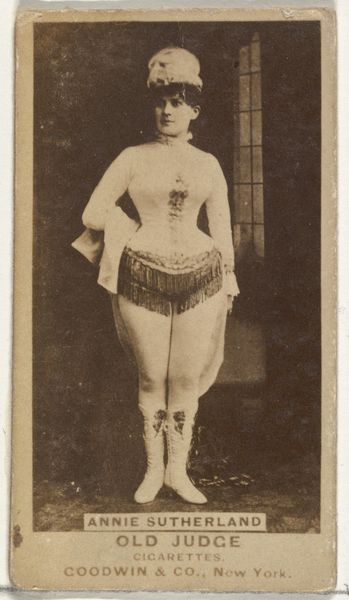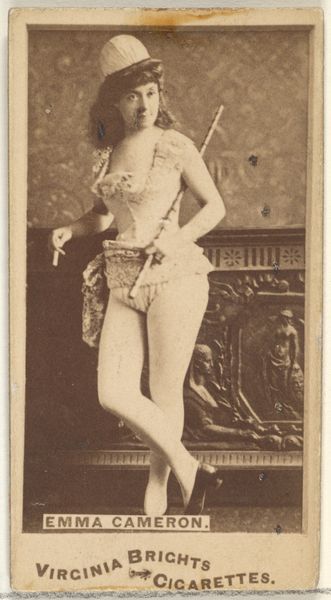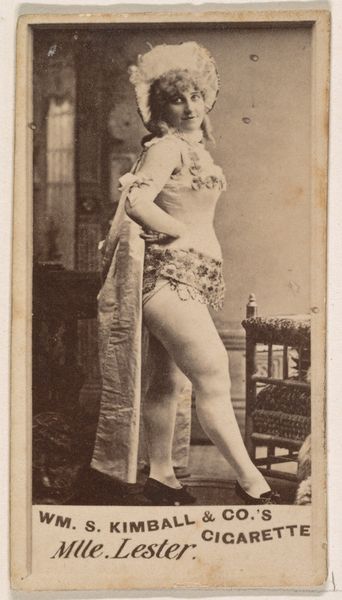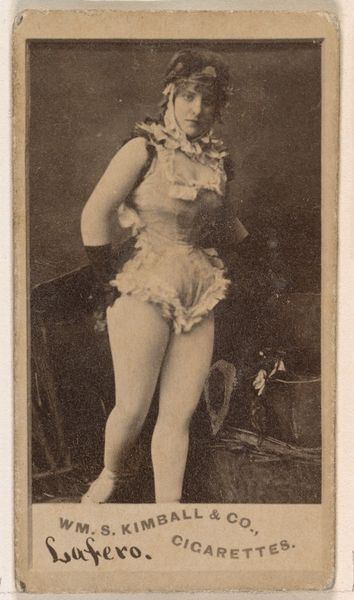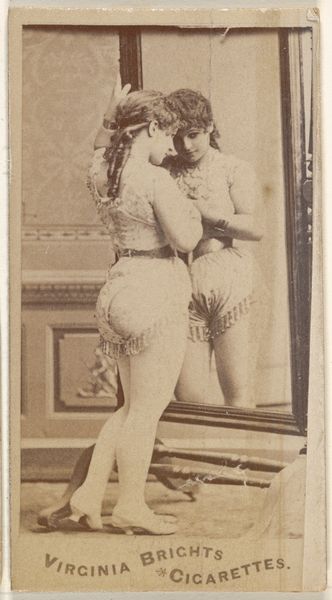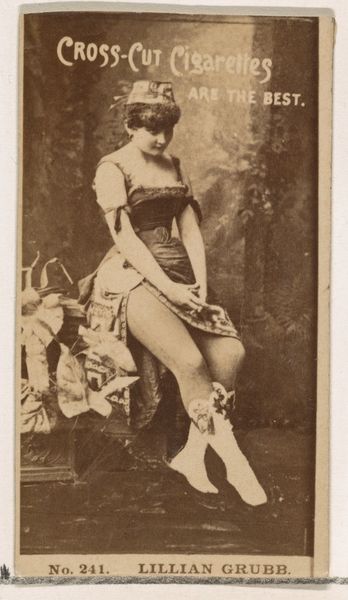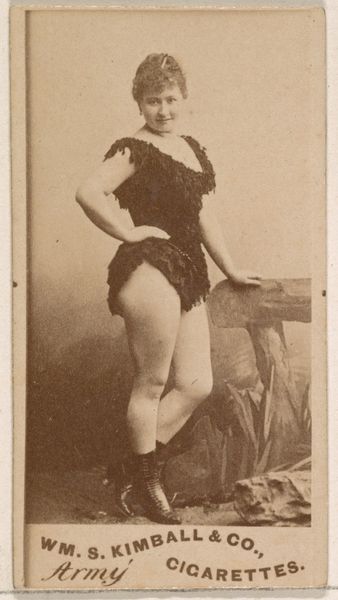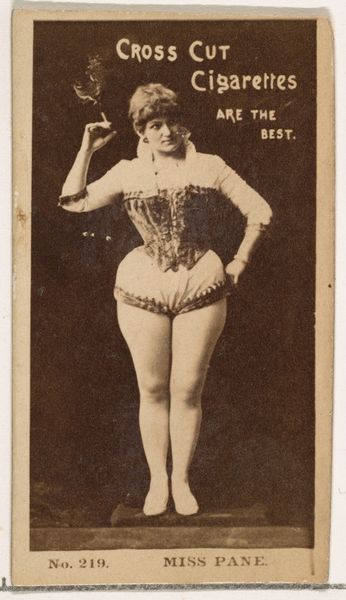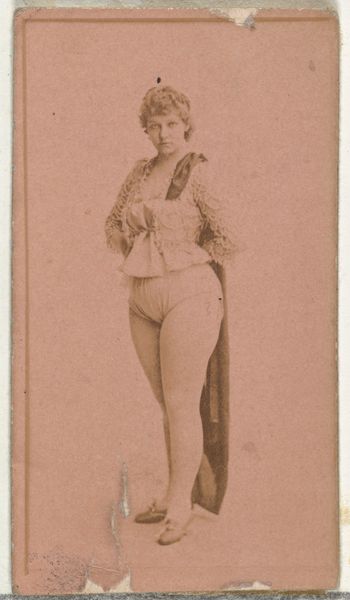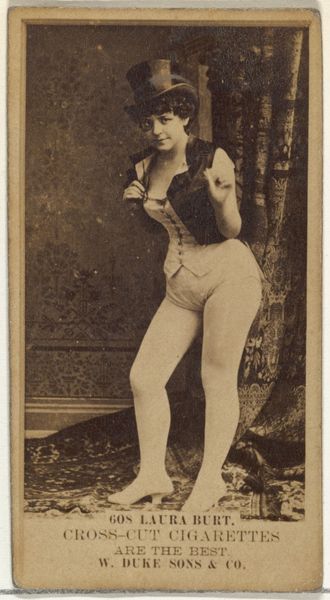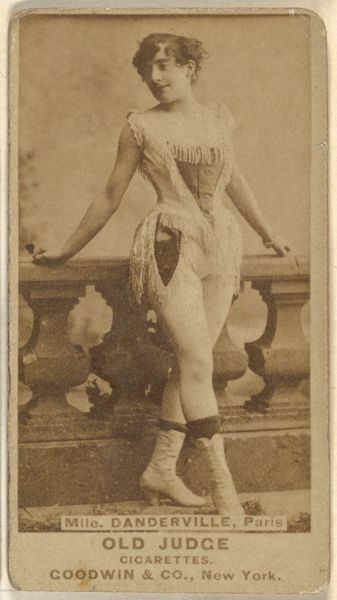
Arline Stanley, from the Actresses series (N245) issued by Kinney Brothers to promote Sweet Caporal Cigarettes 1890
0:00
0:00
print, photography
#
portrait
# print
#
photography
#
historical photography
#
19th century
#
erotic-art
Dimensions: Sheet: 2 1/2 × 1 7/16 in. (6.4 × 3.7 cm)
Copyright: Public Domain
Editor: Here we have a promotional print from 1890 by the Kinney Brothers Tobacco Company, featuring Arline Stanley. I can't help but feel like the image sits at the intersection of glamour and objectification; What do you see in this piece? Curator: It’s such a compelling glimpse into the past, isn't it? It reminds me a bit of those hand-painted photographs of the era, striving for a kind of hyper-reality. I see a fascinating tension between art and commerce. Imagine being Arline Stanley, striking this pose, becoming a collectible object distributed with cigarettes. The composition—the staged background, her carefully crafted appearance—suggests an elaborate fantasy world. How do you think she felt about her image being used this way? Editor: That's a great question. On one hand, maybe it provided her with notoriety, and some degree of agency during an era when very few options were available. On the other hand, her image became completely disassociated from her personal identity. Curator: Exactly! Think about the larger context of advertising then. Tobacco companies were pioneers of using seductive imagery to reach a broader audience. Was this photograph about selling cigarettes or selling a certain kind of ideal femininity? Does it romanticize or commodify its subject? Editor: That really reframes the image. I'd been focusing mostly on Arline Stanley herself, without considering the much bigger cultural machinery at play. I realize the image's creation resulted from many stakeholders. Curator: Right, seeing how societal norms intertwine with commercial desires, you can't separate her presentation from the commercial purpose she serves here, like the actress becomes almost an allegory for longing or some elusive promise marketed alongside a dangerous habit. What do you think now, looking at it from that perspective? Editor: I see it with far more nuance. It's not just a pretty portrait. It's a cultural artifact that says so much about a very specific historical moment. Curator: Couldn’t agree more. Sometimes, the most beautiful things have the most complex stories to tell.
Comments
No comments
Be the first to comment and join the conversation on the ultimate creative platform.
